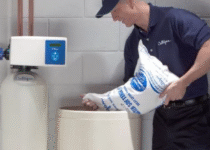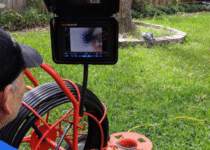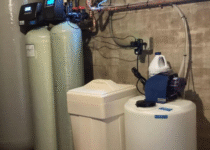The Everyday Value of Clean Water and Why Refilling Makes More Sense Than You Think
We tend to overlook water because it’s always there. Turn on the tap, open the fridge, grab a glass—simple. But for anyone who’s relied on bottled water, either because of taste issues, safety concerns, or just plain convenience, the reality is different. Bottled water is part of daily life, and managing it can get expensive, time-consuming, and sometimes frustrating. The idea of refilling, though, is quietly transforming that routine. It’s cheaper, greener, and honestly, easier than lugging cases from the store every week.
When Convenience Meets Common Sense
We live in a world where convenience often dictates habits. That’s why bottled water took off in the first place—easy grab-and-go hydration. But all those bottles stack up. They fill recycling bins, landfills, and kitchen corners, not to mention the constant drain on wallets.
Refill stations and local refill services are flipping the script. Instead of endless single-use bottles, people are filling sturdy, reusable containers and cutting down dramatically on waste. The shift feels small at first, but over weeks and months, it’s noticeable—fewer plastic piles, less money spent, more peace of mind.
And let’s be honest: searching for bottled water refill near me isn’t just about saving money, it’s about making life a little easier. It’s the relief of knowing there’s a nearby spot where you can refill your bottles without hunting for sales or dragging cases across parking lots.
The Bigger Picture: Why Refilling Matters
Refilling is about more than personal convenience. It’s a direct response to the environmental concerns of single-use plastics. Millions of bottles are discarded daily worldwide, and even recycling has its limits. Reducing the demand for new bottles by reusing your own is one of the simplest steps an individual can take toward sustainability.
It also creates a subtle shift in mindset. Suddenly, water isn’t a packaged product you grab off a shelf—it’s a resource you manage thoughtfully. That perspective alone changes the way people treat water and their overall consumption habits.
Trusting the Source
Of course, when you refill, quality matters. Nobody wants to haul containers to a station only to wonder if the water is really as clean as it should be. That’s where reliable local providers make all the difference.
With services like McLeod EcoWater refill service, people get the assurance that what they’re drinking meets strict standards. It’s not just water run through a basic filter—it’s professionally treated, tested, and maintained. Knowing that takes the guesswork out of the equation, letting you focus on the convenience and cost savings rather than worrying about what’s in your glass.
Refilling as Routine
The best part about refill services is how quickly they slip into everyday life. You pick a day each week, stop by the station, refill your bottles, and you’re set. Before long, it feels just as normal as a grocery trip or filling up the car with gas.
And because most refill stations are priced far below bottled water from stores, you end up with healthier drinking habits too. There’s no hesitation about whether to open that extra bottle—you’ve got a steady supply right at home. Kids drink more water. Guests don’t hesitate to ask for a glass. Even cooking feels better when you know the water you’re using is fresh and clean.
The Local Connection
Another underrated perk of refill services is that they keep money circulating in local communities. Instead of pouring cash into massive corporations selling bottled brands, you’re supporting local businesses that provide clean, reliable water.
People often feel good knowing their refill money helps maintain local jobs and services. It feels less like a transaction and more like being part of a sustainable loop where everyone benefits.
Stations That Keep It Simple
For people who don’t want to commit to a delivery plan or a monthly service, public refill stations are a blessing. You bring your container, fill it up, and head home—it’s as straightforward as it gets. These stations are designed for convenience, often placed in easily accessible spots like shopping centers or community hubs.
And the cost difference? Huge. Over time, families save hundreds, sometimes thousands, compared to bottled water. When you’re on a budget but still care about quality, a drinking water refill station is the sweet spot between affordability and reliability.
Overcoming Old Habits
The toughest part of moving from bottled water to refill systems is simply breaking the habit. People get used to the sight of plastic bottles stacked in the pantry or tossed in the recycling bin. Switching to refillable containers requires a slight adjustment, but once you get into the groove, it feels liberating.
Suddenly, there’s less clutter at home, fewer trips hauling heavy cases, and more control over your water supply. The small act of bringing bottles to a refill point turns into a satisfying little ritual that feels better for your wallet and the planet.
Businesses Are Catching On Too
It’s not just households making the switch. Offices, gyms, and even small cafés are turning to refill services. For them, the math is simple: reliable, affordable water without the hassle of constantly ordering pallets of bottled products. Customers and employees alike notice the difference, and it often becomes a selling point—sustainability isn’t just trendy, it’s expected.
Businesses also love the predictability. Costs are consistent, water quality is guaranteed, and they avoid the image problem of being tied to wasteful single-use plastics.
A Reflection on What Really Matters
At its core, this conversation isn’t just about saving money or reducing waste. It’s about making thoughtful choices with something as basic as water. We’re lucky to live in a time and place where clean, safe water is accessible—and taking the extra step to refill instead of reaching for single-use bottles honors that privilege.
For some, the shift might be about budget. For others, it’s the environment. And for many, it’s simply the convenience of knowing exactly where their next bottle of fresh, clean water is coming from.
Closing Thoughts
Water is woven into the fabric of daily life in ways we rarely stop to appreciate. Choosing to refill instead of constantly buying bottles may seem small, but it ripples outward—into your household budget, into community health, into the environment itself.
Next time you’re tempted to grab that shrink-wrapped pack of bottles from the store, pause. Ask yourself whether there’s a refill option nearby, and how much simpler and smarter it might feel to make that choice. Because sometimes, the easiest changes—the ones that fit seamlessly into everyday life—end up being the ones that matter most.



